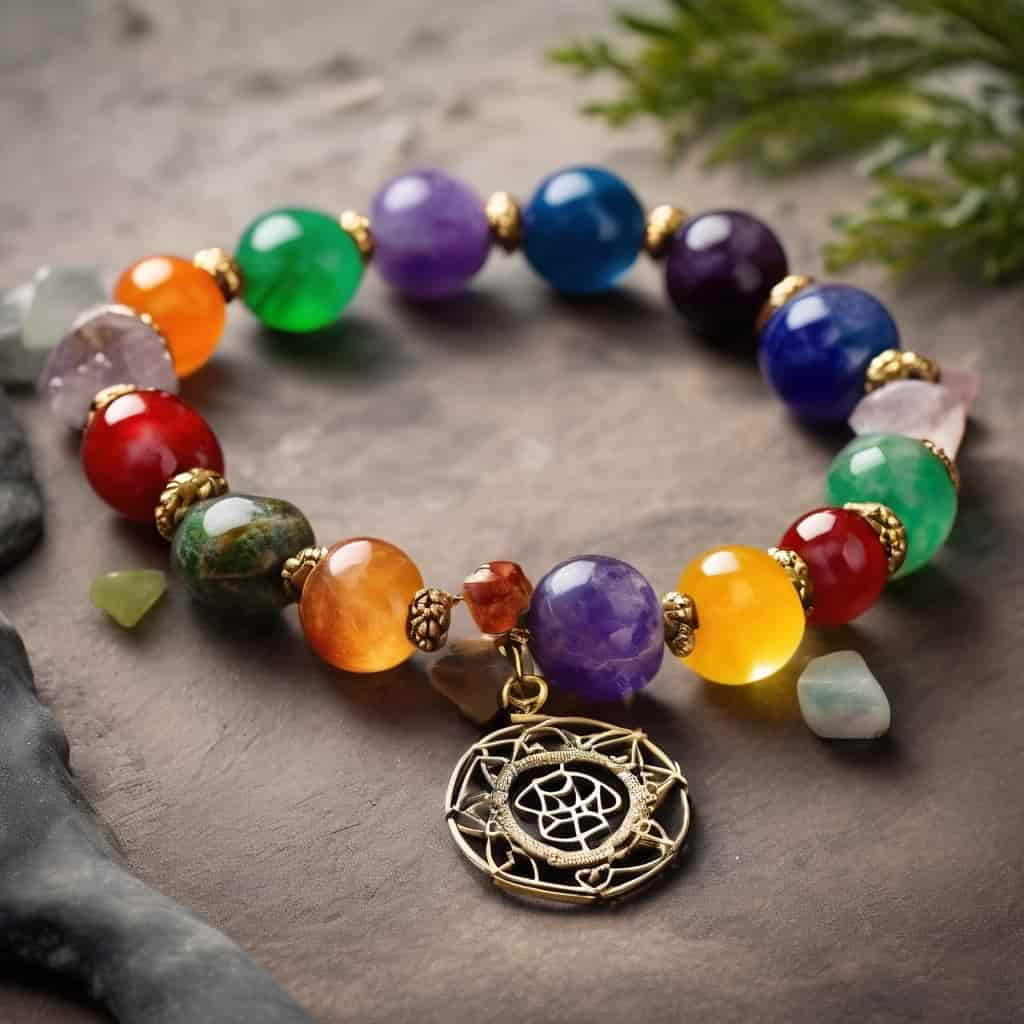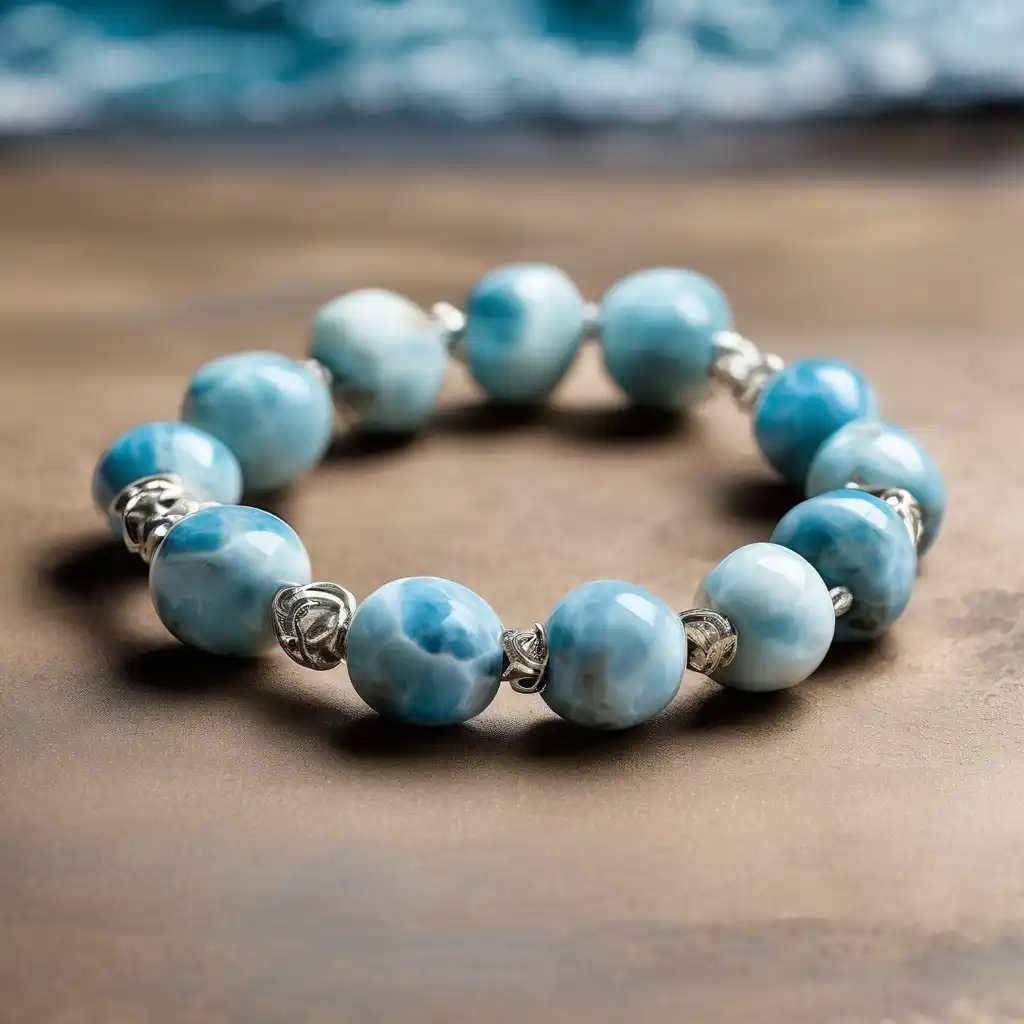Rhodonite vs Rhodochrosite: Meaning, Healing Properties, Benefits, Price, and Zodiac Uses
Introduction
Rhodonite vs Rhodochrosite is one of the most fascinating comparisons in the world of healing crystals and gemstones. At first glance, both stones may seem similar due to their soft pink tones and visually appealing appearances. However, a deeper look into their composition, energy, and practical uses reveals notable differences that every crystal lover, healer, or jewellery enthusiast should know. Whether you are drawn to these stones for their metaphysical properties, their use in jewellery, or their market value, understanding the distinctions between Rhodonite and Rhodochrosite is essential.
Rhodonite vs Rhodochrosite reveals striking harmony: Rhodonite’s dark-veined pink beauty encourages stability, emotional release, and daily strength, while Rhodochrosite’s soft rose tones inspire renewal, nurturing self-love and gentle recovery. Together, these crystals unite grounding with compassionate healing, offering growth, balance, and support for emotional and spiritual development.
Exploring Rhodochrosite vs Rhodonite qualities reveals a clear contrast: Rhodonite fosters stability, courage, and inner harmony, whereas Rhodochrosite inspires affection, happiness, and openness. Collectors often pair them in adornments, uniting protective grounding with uplifting, tender energies for holistic well-being.
In this comprehensive guide, we will explore their appearance, healing properties, zodiac connections, jewellery applications, market value, and real-world buying experience. By the end, you will have a thorough understanding of the distinctions, advantages, and practical uses of Rhodochrosite and Rhodonite, empowering you to make informed decisions whether for personal use, collection, or gifting. Understanding the subtle yet significant differences in Rhodonite vs Rhodochrosite is the first step in choosing the right crystal for your energy, style, and intentions.
What is the difference between Rhodonite and Rhodochrosite bracelets?
Bracelets are one of the most popular ways to wear healing crystals because they keep the stone in continuous contact with the skin, allowing energy to flow freely to the wearer. While Rhodonite and Rhodochrosite bracelets may look similar with their attractive pink shades, a closer examination reveals clear differences in appearance, durability, energy, and cost. Comparing Rhodonite vs Rhodochrosite bracelets is essential for anyone who values both visual appeal and spiritual benefits.
Appearance and Colour Differences
Rhodonite Bracelets: These pieces typically display a medium to light pink base accented with black or brown veining caused by manganese. Each bead carries unique, marble-like patterns, giving them a rugged, earthy character. The contrast of pink with darker lines creates bold, striking jewellery.
Rhodochrosite Bracelets: These look delicate, with bubblegum, salmon, or rose tones mixed with creamy or translucent bands. Argentine varieties are prized for soft, fleshy hues and smooth finish. In Rhodonite vs Rhodochrosite comparisons, Rhodochrosite highlights elegance, gentle charm, and nurturing qualities.
Comparing Rhodonite vs Rhodochrosite bracelets visually, Rhodonite creates a strong, grounded look, while Rhodochrosite radiates tender emotional warmth.
Healing and Emotional Benefits in Bracelets
Rhodonite: Known for balance and forgiveness, these bracelets help release resentment, reduce stress, and promote calmness. They are especially useful during conflicts or relationship struggles, providing emotional stability.
Rhodochrosite: This stone supports healing from grief, heartbreak, or childhood wounds. It promotes self-love, renewal, and compassion, helping individuals embrace joy and emotional openness.
Wearing both together allows Rhodonite vs Rhodochrosite energy to merge—grounding from Rhodonite with heart-opening vibrations from Rhodochrosite.
Durability and Practical Use
Rhodonite, rated 5.5–6.5 on the Mohs scale, is durable and withstands daily wear. Rhodochrosite, ranking 3.5–4, is softer, requires more care, and is best for special use.
Price and Market Perspective
Rhodonite bracelets are affordable, often $10–$30. Rhodochrosite, especially Argentine, is priced higher and sold by weight, appealing to collectors.
Tips for Choosing the Right Bracelet
Choose Rhodonite for grounding and everyday wear; Rhodochrosite for luxury and deep healing. A combination bracelet offers the best of both, embodying the essence of Rhodonite vs Rhodochrosite bracelets.
What is the difference between Rhodolite and Rhodonite?
Gemstone enthusiasts often confuse stones with similar-sounding names, and one frequent mix-up is between Rhodolite and Rhodonite. To make things more complex, some also compare these stones with Rhodochrosite, leading to discussions about Rhodonite vs Rhodochrosite as well. Despite their similar names, Rhodolite and Rhodonite are very different in composition, durability, appearance, and metaphysical applications. Understanding these distinctions is essential for jewellery buyers, collectors, and crystal healers.
Rhodolite – A Brilliant Garnet Variety
Rhodolite, a garnet variety, is admired for its raspberry-to-violet hues, clarity, and brilliance.Commonly faceted for rings, earrings, and pendants; it sparkles with durability due to its 7–7.5 Mohs hardness, making it suitable for daily wear. Metaphysically, Rhodolite symbolizes vitality, passion, and strength, fostering courage, self-confidence, and determination. Unlike gentler heart-centered stones, it emphasizes empowerment, motivation, and resilience, offering energy for overcoming challenges and embracing personal growth.
Rhodonite – A Heart-Healing Mineral
Rhodonite, a manganese silicate mineral, displays pink to rose shades with striking black or brown veins. Unlike faceted Rhodolite, it is usually opaque and polished into beads, cabochons, or bracelets. With a Mohs hardness of 5.5–6.5, it suits daily wear. Spiritually, Rhodonite represents compassion, forgiveness, and grounding. In Rhodonite vs Rhodochrosite comparisons, it is often paired with Rhodochrosite to balance stability with nurturing love for emotional and heart-centered healing.
Comparing Market Value and Healing Roles
In the jewellery market, Rhodolite is often more expensive than Rhodonite due to its brilliance, rarity in large sizes, and gemstone clarity. Rhodonite, while visually attractive, is more affordable and valued primarily for its metaphysical properties. Buyers seeking a combination of emotional healing and aesthetic appeal often choose Rhodonite over Rhodolite for bracelets, pendants, and carvings.
When discussing Rhodonite vs Rhodochrosite, it is important to note that Rhodolite plays a different role. While Rhodochrosite provides deep emotional and heart-centered healing, Rhodolite offers clarity, energy, and passion. Rhodonite remains the practical choice for those focusing on forgiveness, grounding, and emotional balance.
Summary of Differences
| Feature | Rhodolite | Rhodonite |
| Mineral Type | Garnet (silicate) | Manganese silicate |
| Colour | Raspberry to violet, transparent | Pink to rose with black/brown veins, opaque |
| Hardness (Mohs) | 7–7.5 | 5.5–6.5 |
| Uses | Faceted gemstones, rings, earrings | Beads, cabochons, bracelets, carvings |
| Healing Focus | Vitality, passion, empowerment | Forgiveness, compassion, emotional healing |
| Price | Higher due to brilliance | More affordable, widely available |
What zodiac is Rhodonite good for?
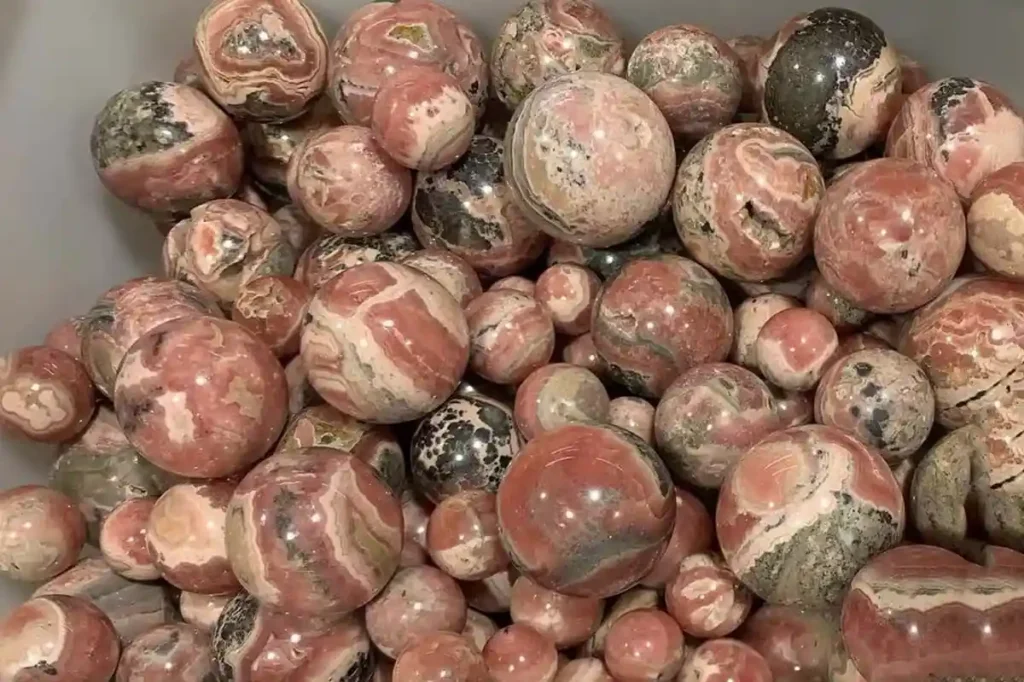
Rhodonite is closely connected to the heart chakra, which makes it one of the most supportive crystals for emotional healing and forgiveness. Its grounding energy resonates with certain zodiac signs that benefit from stability, balance, and compassion. In astrology, healers often compare Rhodonite with Rhodochrosite, since both stones work with the heart but serve slightly different purposes
Best Zodiac Matches for Rhodonite
- Taurus: Known for their stubborn nature, Taureans can benefit from Rhodonite’s calming and patient energy.
- Libra: Rhodonite promotes fairness, forgiveness, and harmony, perfectly aligned with Libra’s pursuit of balance.
- Sagittarius: This adventurous sign gains empathy and emotional depth with Rhodonite’s influence.
These connections highlight the Rhodonite crystal meaning as a stone of forgiveness, compassion and grounded love.
Emotional and Spiritual Healing for Signs
Rhodonite is not limited to just these zodiacs—it can be worn by anyone seeking to release anger, resentment, or emotional pain. Its stabilizing vibration helps transform negative emotions into growth. When compared in discussions of Rhodonite vs Rhodochrosite, Rhodonite is seen as the more practical and grounding choice, while Rhodochrosite brings nurturing joy and deep self-love.
Astrologically, Rhodonite vs Rhodochrosite highlights two paths: one focused on stability and balance, and the other on compassion and renewal. This duality explains why many healers use both together for complete heart healing.
Who Should Wear Rhodochrosite?
Rhodochrosite, known as the “Stone of the Compassionate Heart,” is valued for its loving and nurturing energy. It is ideal for anyone seeking emotional healing, self-love, and deeper heart-centered balance. When discussing Rhodonite vs Rhodochrosite, Rhodochrosite is the gentler, more heart-focused stone, while Rhodonite provides grounding and emotional resilience. Both stones can be worn together to create a balanced energy flow.
Empaths and Emotional Healers
- Protects sensitive individuals from absorbing excessive negative energy.
- Supports compassion without causing emotional exhaustion.
- Helps maintain energetic boundaries while remaining empathetic.
People Recovering from Trauma
- Assists with overcoming grief, heartbreak, or childhood wounds.
- Encourages forgiveness, emotional renewal, and acceptance of past experiences.
- Promotes self-worth and joy, restoring confidence and inner balance.
Professionals Under Stress
- Ideal for teachers, caregivers, therapists, or leaders in high-pressure roles.
- Provides emotional grounding, reduces stress, and prevents burnout.
- Creates calm, nurturing environment for daily work and interactions.
Heart Chakra and Emotional Healing
- Opens and balances the heart chakra, enhancing love and compassion.
- Complements Rhodonite when used together: Rhodochrosite nurtures, while Rhodonite stabilizes.
- Supports spiritual growth by encouraging acceptance, kindness, and emotional clarity.
Tip: For maximum heart-healing benefits, pairing Rhodochrosite with Rhodonite combines grounded compassion and deep emotional support, highlighting the differences and synergy between the two stones in Rhodonite vs Rhodochrosite practices.
What Signs Should You Wear Rhodonite?
Rhodonite is a versatile heart-centered crystal that resonates with many zodiac signs. Its grounding energy and emotional healing properties make it suitable for anyone seeking balance, forgiveness, and compassion. In discussions of Rhodonite vs Rhodochrosite, Rhodonite is often chosen for its practical, stabilizing influence, while Rhodochrosite offers a more nurturing and heart-opening vibration. Using both stones together can create a powerful emotional and spiritual synergy.
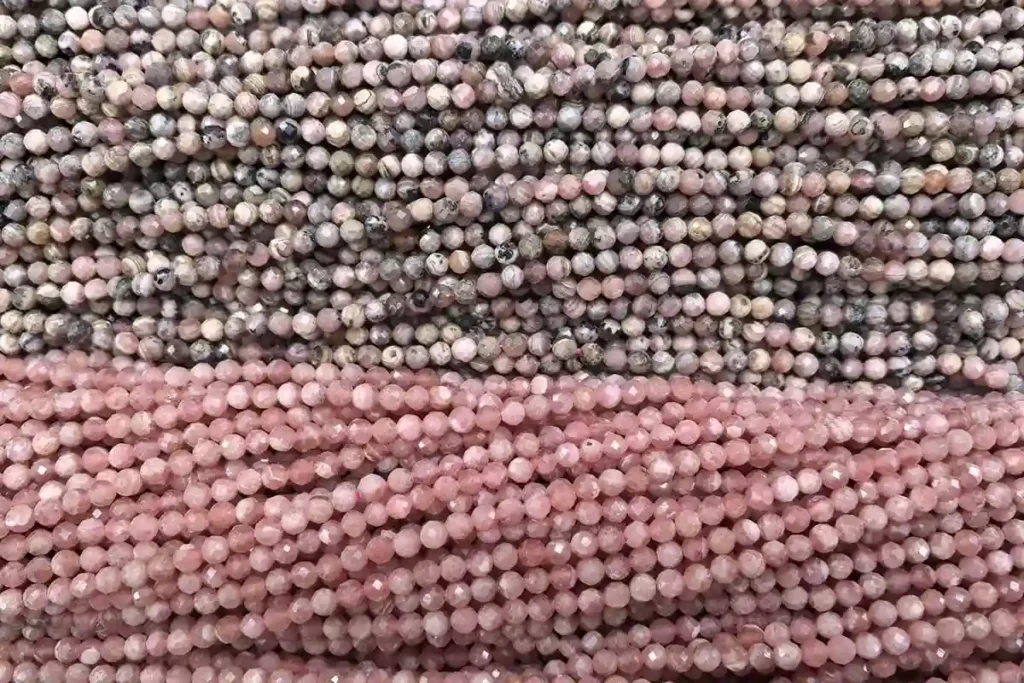
Best Zodiac Matches for Rhodonite
- Taurus: Supports patience, grounding, and emotional clarity; helps Taureans release stubbornness and embrace forgiveness.
- Cancer: Calms emotional intensity, promotes self-love, and aids in resolving past hurts.
- Aries: Encourages self-control, empathy, and thoughtful responses instead of impulsive actions.
- Leo: Balances ego, teaches humility, and opens the heart to compassion.
Universal Benefits Across Zodiac Signs
- Rhodonite’s stabilizing energy makes it suitable for any zodiac sign seeking emotional balance.
- Its grounding vibration transforms negative emotions into personal growth, resilience, and clarity.
- When paired with Rhodochrosite, the combination enhances heart-centered healing, balancing strength with nurturing energy.
Emotional and Spiritual Healing
- Supports forgiveness and reconciliation in relationships.
- Encourages compassion for self and others, promoting emotional maturity.
- Strengthens the heart chakra, working in tandem with Rhodochrosite to enhance self-love and spiritual growth.
Tip: Wearing Rhodonite alongside Rhodochrosite allows users to experience both grounded compassion and deep emotional healing, perfectly illustrating the complementary roles of these two stones in Rhodonite vs Rhodochrosite practices.
What is Rhodochrosite Good For?
Rhodochrosite is cherished as a heart-centered healing crystal that promotes love, emotional renewal, and self-worth. When exploring Rhodonite vs Rhodochrosite, Rhodochrosite is recognized for its gentle, nurturing energy, while Rhodonite provides grounding and resilience. Many practitioners wear both together to benefit from the balance of compassion and stability.
Emotional Healing
- Releases past trauma, grief, and emotional scars, particularly from childhood or relationships.
- Encourages forgiveness, acceptance, and emotional renewal.
- Supports self-love, confidence, and embracing one’s inner joy.
Physical Benefits (Crystal Healing Beliefs)
- May improve circulation and support heart health.
- Assists in digestion and blood pressure regulation.
- Reduces tension and stress-related physical discomfort.
Spiritual and Chakra Healing
- Opens and balances the heart chakra, promoting unconditional love.
- Encourages spiritual growth through kindness, compassion, and self-acceptance.
- Can be used in meditation to release guilt, fear, and emotional blockages.
Practical Uses and Jewellery
- Rhodochrosite is best used in bracelets, pendants, or cabochons, where its energy stays close to the body.
- When combined with Rhodonite, it enhances emotional healing while maintaining stability—showing the complementary nature of Rhodonite vs Rhodochrosite.
- Regular use supports long-term heart-centered growth, joy, and emotional balance.
Tip: Wearing Rhodochrosite with Rhodonite can create a powerful synergy, where Rhodochrosite nurtures the heart while Rhodonite grounds the emotions, illustrating the holistic benefits when comparing Rhodonite and Rhodochrosite.
What Zodiac is Rhodochrosite?
Rhodochrosite resonates strongly with the heart chakra, making it an ideal stone for zodiac signs that benefit from emotional openness, compassion, and self-love. In discussions of Rhodonite vs Rhodochrosite, Rhodochrosite is chosen for its nurturing energy, while Rhodonite provides grounding and stability. Using both stones together enhances heart-centered healing and emotional balance.
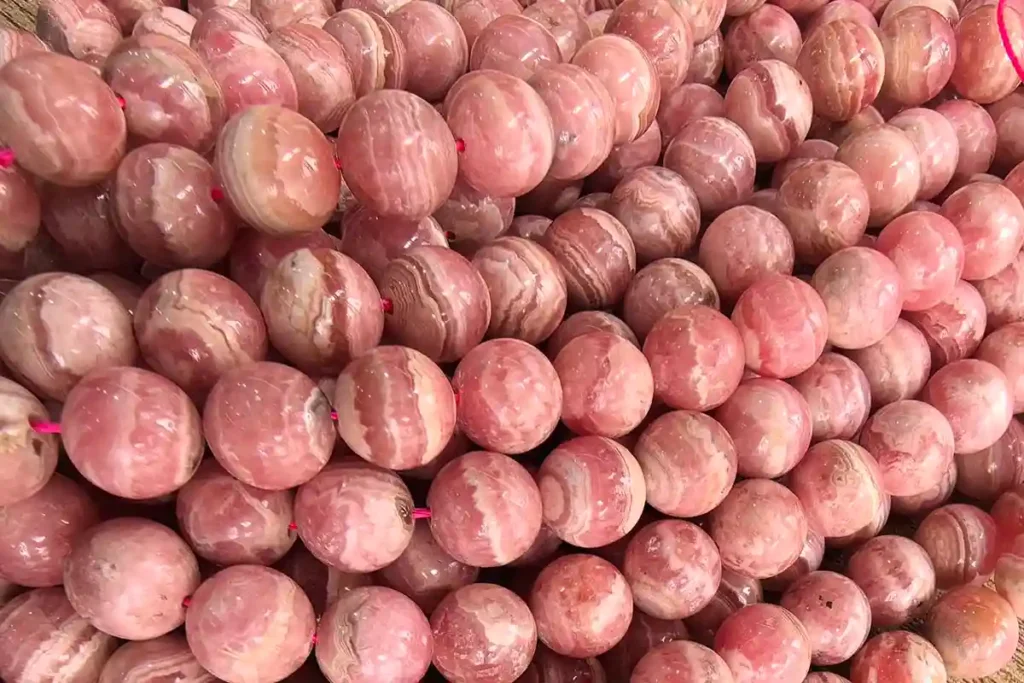
Zodiac Signs Associated with Rhodochrosite
- Leo: Helps soften pride, encourages genuine self-expression, and promotes compassionate relationships.
- Scorpio: Supports healing of intense emotions, past trauma, and deep emotional wounds.
- Virgo: Provides nurturing energy, encouraging self-acceptance and emotional balance for perfectionist tendencies.
Universal Heart-Healing Power
- Even beyond zodiac associations, Rhodochrosite resonates with anyone seeking heart-centered healing.
- Encourages forgiveness, self-worth, and the ability to attract loving relationships.
- When paired with Rhodonite, it creates a synergy of grounded compassion and nurturing love—highlighting the complementary effects in Rhodonite vs Rhodochrosite practices.
Emotional and Spiritual Benefits
- Enhances meditation and mindfulness practices focused on releasing guilt, fear, and emotional stress.
- Strengthens the heart chakra for personal growth, joy, and emotional resilience.
- Acts as a supportive crystal for empathy, caregivers, and anyone working in emotionally demanding environments.
Tip: Wearing Rhodochrosite alongside Rhodonite provides a balance of stability and emotional healing, demonstrating the dual benefits when exploring Rhodonite vs Rhodochrosite for both metaphysical and practical purposes.
Why is Rhodochrosite So Expensive?
When comparing Rhodonite vs Rhodochrosite, one of the most noticeable differences is their price. Rhodochrosite is considered a premium gemstone in the market due to its rarity, mining challenges, and high demand. Unlike Rhodonite, which is widely available and moderately priced, Rhodochrosite, especially Argentine Rhodochrosite, commands a much higher value because of its exceptional colour, clarity, and banding patterns. Understanding why Rhodochrosite is so expensive helps buyers, collectors, and crystal enthusiasts make informed choices.
Rarity and Mining Sources
- The most valued Rhodochrosite comes from Argentina, where the stone forms unique pink bands often interlaced with creamy white. These high-quality stones are limited in supply, and mining them requires careful extraction to avoid fractures.
- In contrast, Black Line Rhodochrosite is more abundant and affordable, usually sold by strand, which demonstrates a clear difference when evaluating Rhodonite and Rhodochrosite for jewellery and collection purposes.
- The rarity of Argentine Rhodochrosite combined with its demand in the jewellery market naturally drives up the price, making it a luxury gemstone.
Gemstone Quality Factors
- Colour: Deep, rich pinks or vibrant raspberry tones are highly sought after. Stones with more uniform, vivid colours command the highest prices.
- Clarity: Transparent or translucent Rhodochrosite pieces are rare and considered premium, while opaque or lightly banded stones are more affordable.
- Patterns: Unique banding formations, such as stalactite-like layers from Argentine mines, significantly increase desirability.
- In discussions about Rhodonite vs Rhodochrosite, it is evident that Rhodochrosite’s aesthetic appeal and colour vibrancy place it in a much higher market bracket compared to Rhodonite, which is less rare and earthier in appearance.
Jewellery Market Demand
- Rhodochrosite is in high demand among jewellery collectors, especially for bracelets, cabochons, pendants, and custom carvings. Its softer Mohs hardness (3.5–4) means that skilled cutting and polishing are required, which adds to production costs.
- Rhodonite, in contrast, has higher hardness (5.5–6.5), making it easier to craft into durable, everyday jewellery at a lower price. The comparison of Rhodonite vs Rhodochrosite highlights why Rhodochrosite is considered a premium stone, while Rhodonite is more accessible for general use.
- Many buyers are willing to pay extra for Argentine Rhodochrosite due to its visual appeal and heart-centered metaphysical properties, which makes it a top choice for luxury jewellery.
Practical Takeaways for Buyers
- While Rhodochrosite may appear expensive at first glance, its rarity, aesthetic beauty, and metaphysical value justify the price for collectors and crystal enthusiasts.
- For those on a budget, Black Line Rhodochrosite offers a cost-effective alternative without sacrificing heart-centered healing benefits.
- Comparing Rhodonite and Rhodochrosite in terms of pricing, quality, and rarity can help buyers decide which stone aligns with their purpose, whether for everyday use, metaphysical work, or collection.
Tip: When choosing between Rhodonite vs Rhodochrosite, consider your budget, intended use, and whether you prefer a practical grounding stone or a luxurious, emotionally healing gemstone. Understanding these factors ensures that your investment in either crystal provides both beauty and energetic benefits.
What is Rhodonite Crystal Good For?
When exploring Rhodonite vs Rhodochrosite, it’s clear that both stones provide heart-centered healing, but they serve different purposes. Rhodonite, often called the “Stone of Compassion,” is highly valued for its ability to balance emotions, promote forgiveness, and cultivate empathy. Unlike Rhodochrosite, which focuses on emotional renewal and self-love, Rhodonite is more practical for grounding emotional energy and managing daily challenges.
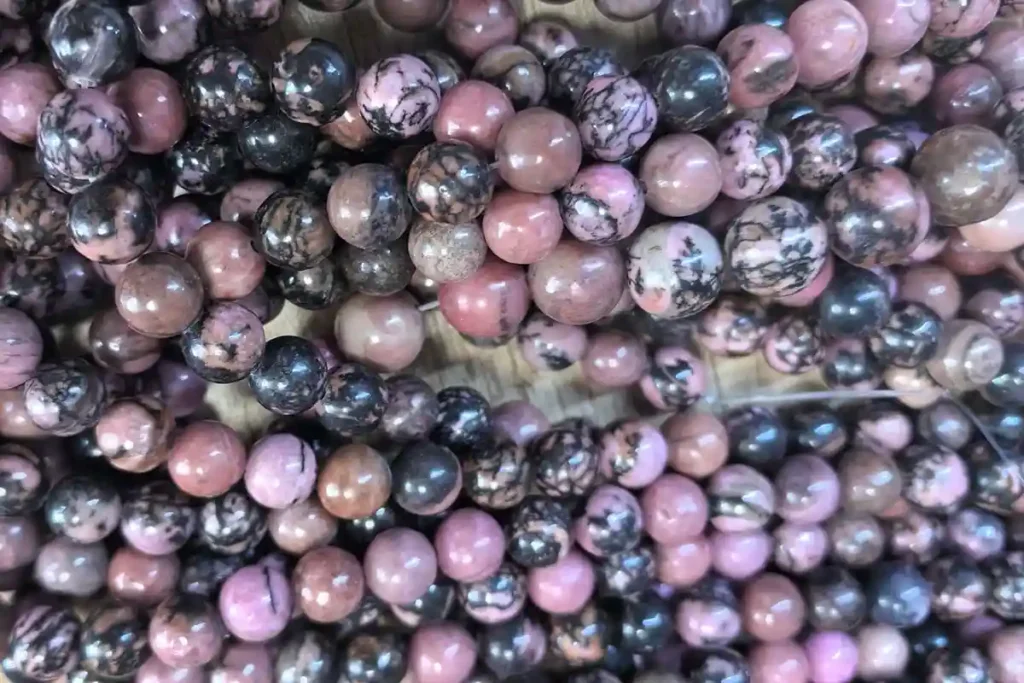
Emotional Benefits
- Rhodonite helps release anger, resentment, and emotional scars, offering a gentle yet effective way to heal past trauma.
- It encourages forgiveness in relationships, making it an excellent crystal for individuals struggling with unresolved conflicts.
- Wearing or carrying Rhodonite helps transform negative emotions into constructive energy, highlighting the difference between Rhodonite and Rhodochrosite, where the latter works more on nurturing and deep emotional healing rather than practical balance.
Physical Benefits (Crystal Healing Beliefs)
- Rhodonite is believed to support heart and lung health, boosting circulation and aiding recovery from physical shock or trauma.
- It can help reduce stress and stabilize the immune system, which enhances overall well-being.
- For those comparing Rhodonite vs Rhodochrosite, Rhodonite is often chosen for everyday energetic support due to its grounding qualities, while Rhodochrosite is reserved for emotional renewal and more delicate, intentional use.
Spiritual Uses
- Rhodonite balances the heart chakra, allowing emotional clarity and fostering compassion for oneself and others.
- It grounds spiritual energies, connecting emotional healing with practical action in daily life.
- Often paired with other stones such as Rose Quartz or Rhodochrosite, Rhodonite amplifies love and forgiveness energies while maintaining stability and balance.
- Understanding Rhodonite vs Rhodochrosite helps crystal enthusiasts recognize that while both stones support the heart, Rhodonite provides structure and resilience, making it ideal for those who need guidance through challenging emotions.
Practical Tips for Using Rhodonite
- Wear Rhodonite as bracelets, pendants, or keep polished stones nearby to access its calming and supportive vibrations.
- Keep a piece under your pillow or on your desk to encourage emotional balance throughout the day.
- For a complete heart-healing approach, Rhodonite vs Rhodochrosite combinations balance resilience with nurturing love.
Summary: Rhodonite is best for individuals seeking emotional grounding, forgiveness, and practical support in managing everyday life challenges. When compared to Rhodochrosite in discussions of Rhodonite vs Rhodochrosite, it is clear that Rhodonite focuses on balance and compassion, whereas Rhodochrosite focuses on deep emotional healing and luxury appeal. This makes Rhodonite a versatile, accessible, and valuable crystal for both beginners and experienced crystal users.
FAQ: Rhodonite vs Rhodochrosite
What zodiac is Rhodochrosite?
Rhodochrosite is strongly associated with Leo, enhancing self-expression, confidence, and emotional generosity. It also benefits Scorpio and Virgo by nurturing heart-centered energy and emotional healing. When comparing Rhodonite vs Rhodochrosite, Rhodonite tends to support grounding and emotional resilience, while Rhodochrosite offers more luxurious heart-centered energy for these zodiac signs.
What is the healing heart of Rhodochrosite?
The “healing heart” of Rhodochrosite refers to its ability to release old emotional wounds, foster self-love, and restore joy. In contrast, Rhodonite emphasizes balancing emotions and forgiveness. Understanding Rhodonite and Rhodochrosite helps users choose which stone suits their current emotional needs, whether they require stability (Rhodonite) or deep emotional renewal (Rhodochrosite).
What to pair with Rhodochrosite?
Rhodochrosite pairs well with Rose Quartz for love, Clear Quartz for energy amplification, and Amethyst for spiritual balance. Many crystal enthusiasts also combine Rhodonite vs Rhodochrosite, experiencing grounding with heart-centered healing. This combination beautifully illustrates their complementary nature and synergistic benefits in crystal practice.
Is Rhodochrosite safe to wear?
Yes, Rhodochrosite is safe for jewellery, though it is softer (3.5–4 on the Mohs scale) and requires gentle handling. Rhodonite is harder and more durable, making it practical for daily wear. Knowing the difference is key when exploring Rhodonite and Rhodochrosite in jewellery or crystal healing practices.
Why is Rhodochrosite so expensive?
Its high cost stems from rarity, mining challenges, and demand for premium-quality Argentine stones. Even low-grade Rhodochrosite is more expensive than Black Line Rhodochrosite. Rhodonite, by contrast, is widely available and affordable, making Rhodonite vs Rhodochrosite comparisons essential for buyers deciding based on budget and purpose.
Can I wear Rhodonite to sleep?
Yes, wearing Rhodonite to sleep is considered safe. Many people keep Rhodonite bracelets or tumbled stones under their pillow to promote emotional balance, reduce nightmares, and encourage peaceful rest.
Which crystal cannot be worn together?
While most crystals are compatible, stones with opposing energies may feel conflicting. However, Rhodonite and Rhodochrosite are often worn together successfully, combining grounding with heart-centered healing. Understanding Rhodonite vs Rhodochrosite ensures users get complementary benefits without energy conflict.
Conclusion: Choosing Between Rhodonite vs Rhodochrosite
The comparison of Rhodonite vs Rhodochrosite highlights two visually similar stones that serve different purposes in emotional healing, jewellery use, and crystal practice. While both feature beautiful shades of pink, their energies and properties set them apart, making each suitable for specific needs.
In the comparison of Rhodochrosite vs Rhodonite, the latter is celebrated for self-love, emotional renewal, and joy. With its soft pink to rose-red hues, especially in prized Argentine specimens, Rhodochrosite holds a special place among collectors and fine jewellery makers. This gemstone is perfect for those who wish to release past trauma, open the heart, and embrace unconditional love. Although it is softer and generally more expensive than Rhodonite, the unique energy of Rhodochrosite makes it a treasured choice for deep emotional healing and spiritual growth.
For crystal enthusiasts and healers, the choice of Rhodonite and Rhodochrosite depends on intention, lifestyle, and emotional goals. Wearing Rhodonite provides grounding and stability, while Rhodochrosite offers heart-centered energy and emotional renewal. Many practitioners recommend combining both stones to achieve a harmonious balance between practical daily support and deep emotional healing.
Ultimately, whether used alone or together, Rhodonite vs Rhodochrosite harmonize beautifully, offering love, balance, and growth. Recognizing their differences helps you choose the gemstone that best supports your needs while honouring each stone’s unique healing qualities.



